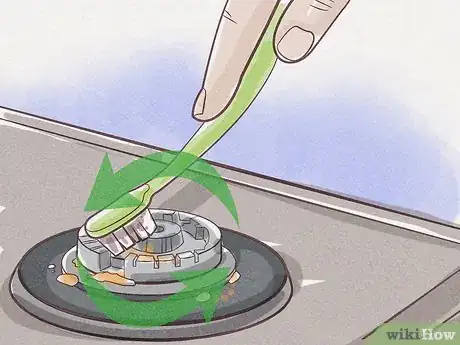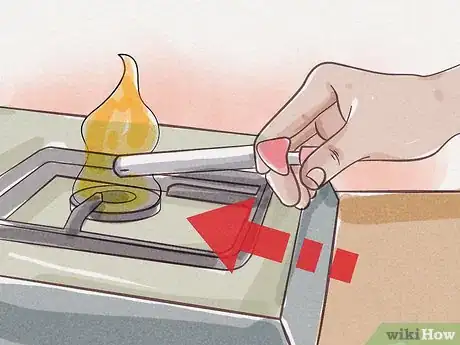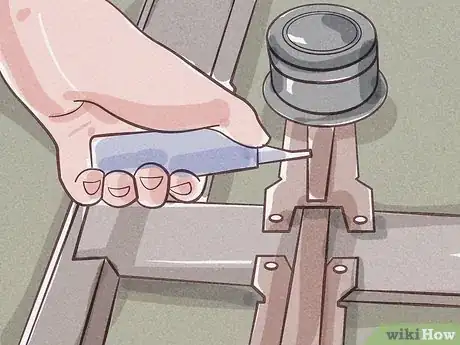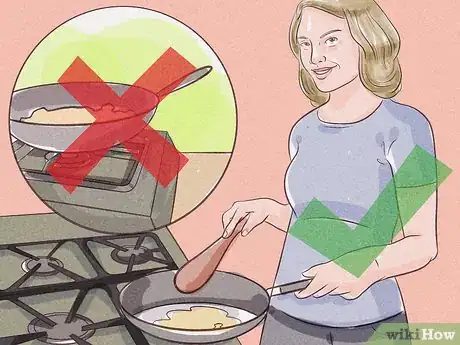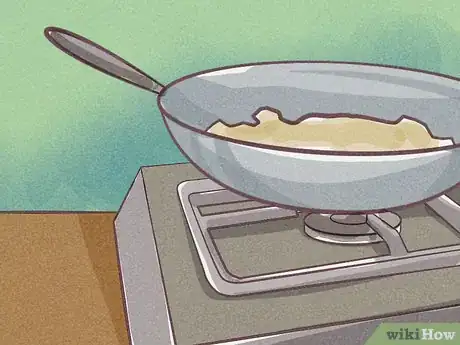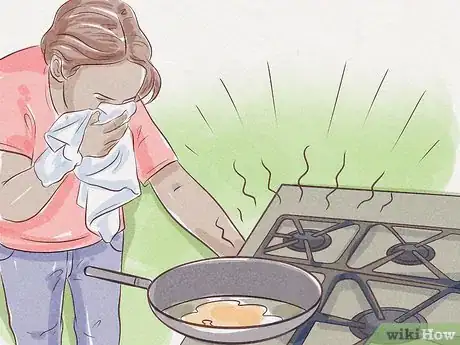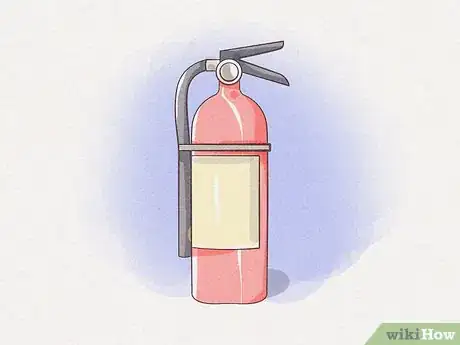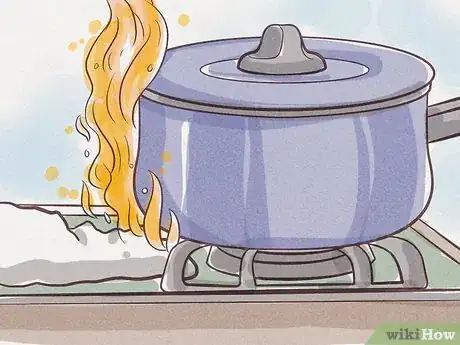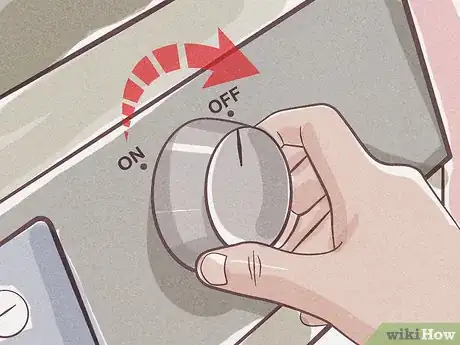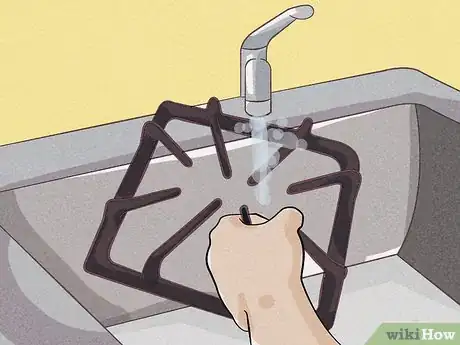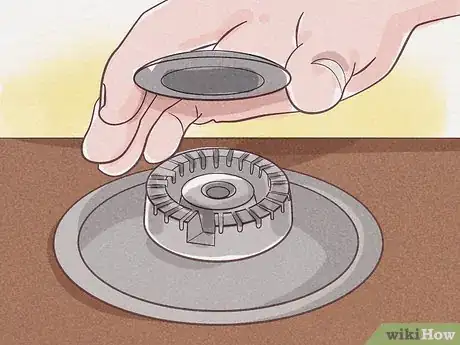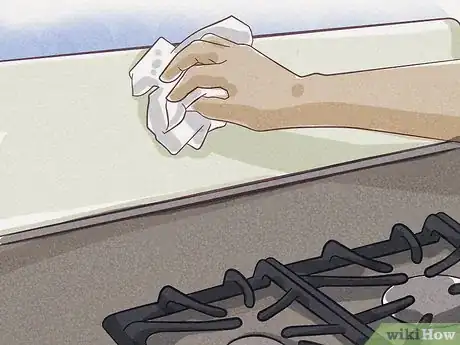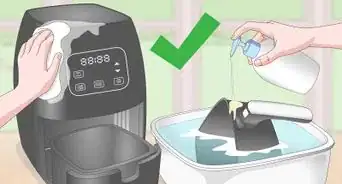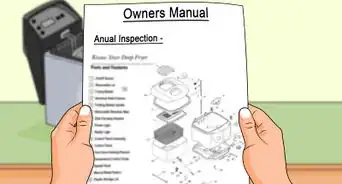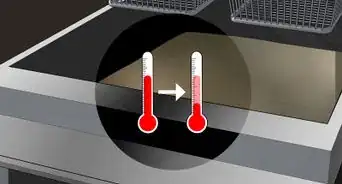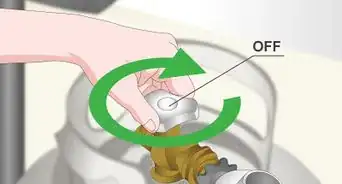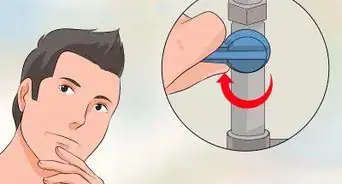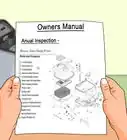This article was co-authored by Andrii Gurskyi. Andrii Gurskyi is the owner and founder of Rainbow Cleaning Service, a New York City cleaning company specializing in apartments, homes, and moving cleanup using non-toxic and artificial fragrance free cleaning solutions. Founded in 2010, Andrii and Rainbow Cleaning Service has served over 35,000 customers.
There are 11 references cited in this article, which can be found at the bottom of the page.
This article has been viewed 309,182 times.
Gas stoves are valued for their quick heating response and simple temperature adjustment. If you've never used a gas stove, however, you may feel a little confused when first operating one. But once you get the hang of using a gas stove, they are just as easy to use and maintain as their electric counterparts. As long as you take good care of your gas stove and use safety precautions while cooking, you should be able to use it with ease.
Steps
Turning on a Gas Stove
-
1Do a body safety check before turning on your gas stove. To prevent any fires while using your gas stove, roll up your shirt sleeves above the elbow and tie back long hair with a rubber band. If you have any jewelry on, remove it before starting the stove.[1]
- If you're wearing footwear, make sure it is nonslip to prevent cooking accidents.
-
2Turn the stove dial on to light the stove. Most gas stoves are equipped with a dial that lights the burner. You can usually adjust the heat to low, medium, and high depending on what you're using the stove for. Twist the dial and wait for the burner to light, then adjust it to your desired heat setting.
- In some cases, the fire may not light right away. This is common in old stoves and is nothing to worry about—try turning the stove dial on again until the burner lights.
Advertisement -
3Try cleaning your burner holes and igniter if it does not light immediately. If your burner is clogged with food residue, it may not light automatically. Clean the burner and the igniter with a stiff toothbrush (without water or cleaning solutions) to remove any grease or crumbs.[2]
- Use a needle to get food out of hard-to-reach places, like the burner holes.
- Call a home repairman if cleaning your burner does not seem to help. Your igniter may be broken and need replacement.
-
4Light the gas stove manually as an alternative. If your gas stove igniter is broken, most gas stoves can be lit with a match or lighter. Turn the gas dial to medium, then ignite your match or lighter. Hold the match or lighter close to the center of the burner, then wait 3-5 seconds until the burner ignites. Remove your hand quickly to prevent getting burned.[3]
- For the safest option, use a long-handled lighter. Long-handled lighters can be found at most craft or hardware stores.
- If you have never lit a gas stove before or seen someone else do it, you may not want to do it on your own. Lighting a gas stove manually can be dangerous if you have never done it before.
Using Gas Stoves Safely
-
1Check your stove's pilot light if it is an older model. Most older gas stoves are equipped with pilot lights, which stay on constantly even if the stove is off. Check with your stove manufacturer to see if your stove has a pilot light. For models with a pilot light, remove the burner grates from your stove and open the cooktop panel. The pilot light should be a small flame located directly below the stove panels.
- If the pilot light is out and you can smell sulfur, leave your home and call emergency services, as your stove may be leaking gas into the home.[4]
-
2Always keep your stove attended when it's on. When cooking with your gas stove, never leave the room. A fire can start within seconds if your food is left unattended, and it is important to keep your burners in sight at all times.
-
3Use your gas stove for cooking only. Gas stoves are made to be used only for cooking food. Never use your stove for heating your home, as keeping the stove lit for extended amounts of time increases the likelihood of a gas leak.[5]
- If you have a gas oven, it also should not be used for heating rooms.
-
4Watch for a hissing sound or the smell of natural gas. If you smell a sulfurous, "rotten egg" odor or hear a hissing sound coming from your stove, exit your home immediately and call emergency services. Your stove may be leaking natural gas, which can be deadly if it is not fixed immediately.[6]
- Do not light a match, use a flashlight, or turn any electric switches on or off if you suspect your stove might be leaking gas.
-
5Stock your kitchen with a fire extinguisher in case of emergency. Keep a fire extinguisher in a cabinet near your gas stove in case of grease fires. Store baking soda in the same cabinet as well, as pouring baking soda on the flames can stop small grease fires.[7]
- Never throw water on a grease fire. Grease fires flare up and may spread if they come in contact with water.
-
6Avoid placing flammable materials near your stove. Flammable items, like low-hanging towels or curtains, can cause accidents if placed too near your stove. Keep flammable materials away from your stove, and avoid using flammable items like cigarettes while cooking.
-
7Turn the stove off after every use. To prevent fires or burns, remember to switch the stove dial to "off" after you use it. If you have trouble remembering to turn the stove off, try placing a sticky note reminder on your fridge or a cabinet near your stove so you don't forget.
Cleaning a Gas Stove Routinely
-
1Remove your stove's burner grates and clean them separately. Take your burner grates off of the stove and place them in the sink. Then, fill the sink with hot, soapy water. Let your burner grates soak for several minutes, then clean them off with a wet sponge or dishcloth.[8]
- Place your burner caps in the water as well and wash them in the hot, soapy water.
-
2
-
3Put the grates and burner caps back on. After wiping off any crumbs and stains from the stovetop, dry off burner grates and caps. Place the grates and caps back in place to reassemble the stove and make it ready for use again.[11]
-
4Clean the stove knobs and back panels, if needed. Wipe off the stove knobs and back panel with a wet washcloth to remove any dust or minor stains. If there are larger food stains on your knobs or panels, spray them with the vinegar-water mixture and let it sit for several minutes before wiping them off again.[12]
Warnings
- The burning of gas can release large amounts of nitrogen oxides, which are known to be harmful to the lungs. Make sure to have proper ventilation while using a gas stove.⧼thumbs_response⧽
- Never ignore gas odors coming from your stove. If you smell a natural gas leak, leave your home and call emergency services immediately.⧼thumbs_response⧽
References
- ↑ http://www.preventfire.com/adults/oven-and-stove-top-safety.html
- ↑ https://www.familyhandyman.com/appliance-repair/stove-repair/gas-range-burner-repair-tips/view-all/
- ↑ https://www.youtube.com/watch?v=ZmRjmhxU1Wg&feature=youtu.be&t=41
- ↑ http://www.sears.com/articles/appliances/ranges/gas-stove-safety-tips.html
- ↑ http://www.safegas.org/tips/tips.html
- ↑ http://www.streetdirectory.com/food_editorials/cooking/cooking_appliances/how_to_use_your_stove_safely.html
- ↑ https://www.bobvila.com/articles/how-to-put-out-a-grease-fire/
- ↑ http://www.bhg.com/homekeeping/house-cleaning/tips/how-to-clean-a-stove-top/
- ↑ Andrii Gurskyi. House Cleaning Professional. Expert Interview. 11 April 2019.
- ↑ https://www.apartmenttherapy.com/how-to-clean-and-maintain-a-gas-stove-apartment-therapy-tutorials-215396
- ↑ https://www.thekitchn.com/how-to-clean-a-greasy-gas-stovetop-with-just-soap-and-water-cleaning-lessons-from-the-kitchn-139438
- ↑ https://www.apartmenttherapy.com/how-to-clean-and-maintain-a-gas-stove-apartment-therapy-tutorials-215396
- ↑ http://www.preventfire.com/adults/oven-and-stove-top-safety.html
About This Article
If you want to use a gas stove safely, make sure to roll up your shirt sleeves and tie back your hair before you ignite the flame. When you're ready, turn the stove dial to light the burner, then adjust it to your desired heat setting once the flame appears. While your stove is on, make sure to keep your burners in sight at all times, since a fire can start within seconds if your food is left unattended. To prevent fires or burns, remember to switch off your stove after each use. If you hear a hissing sound or smell the "rotten egg" odor of natural gas, exit your home immediately and call emergency services, since your stove may be leaking gas. For more advice, like how to clean a burner so it lights immediately, keep reading.


